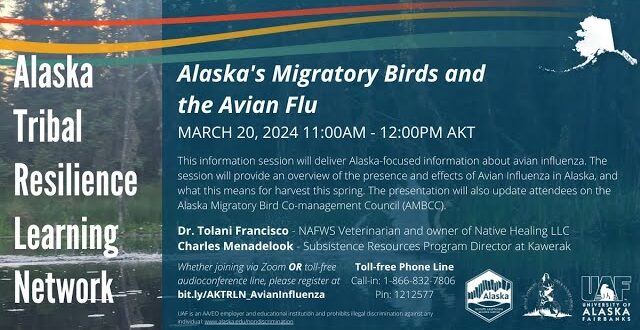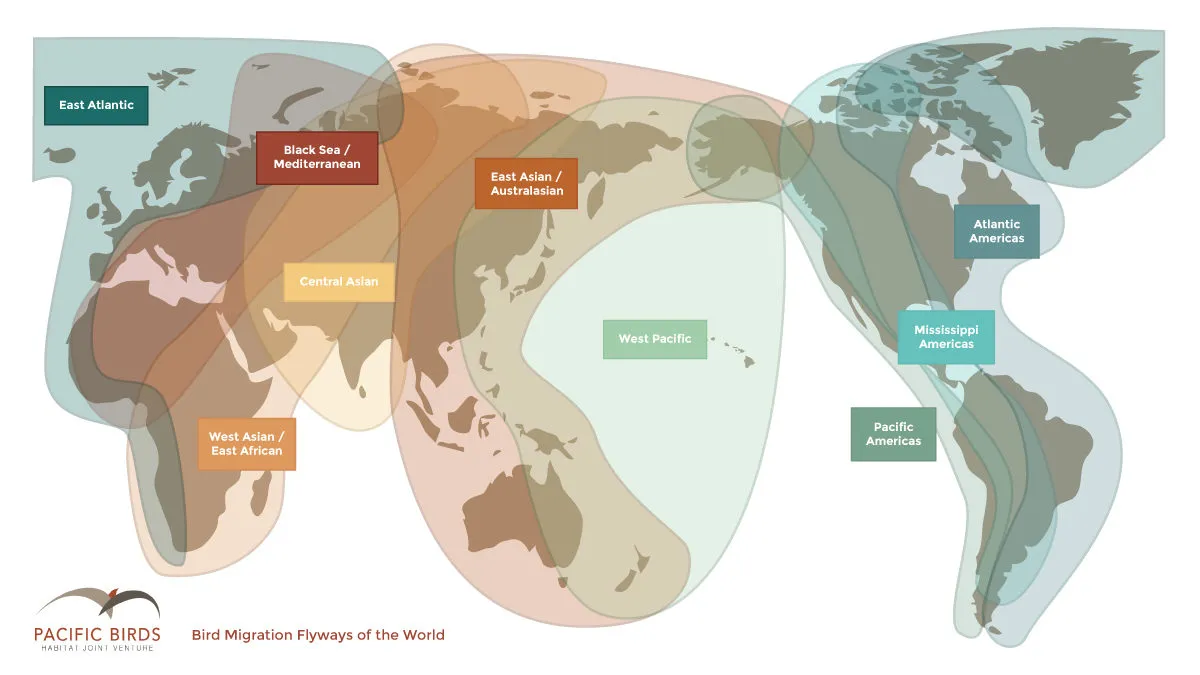Avian Influenza:
Alaska
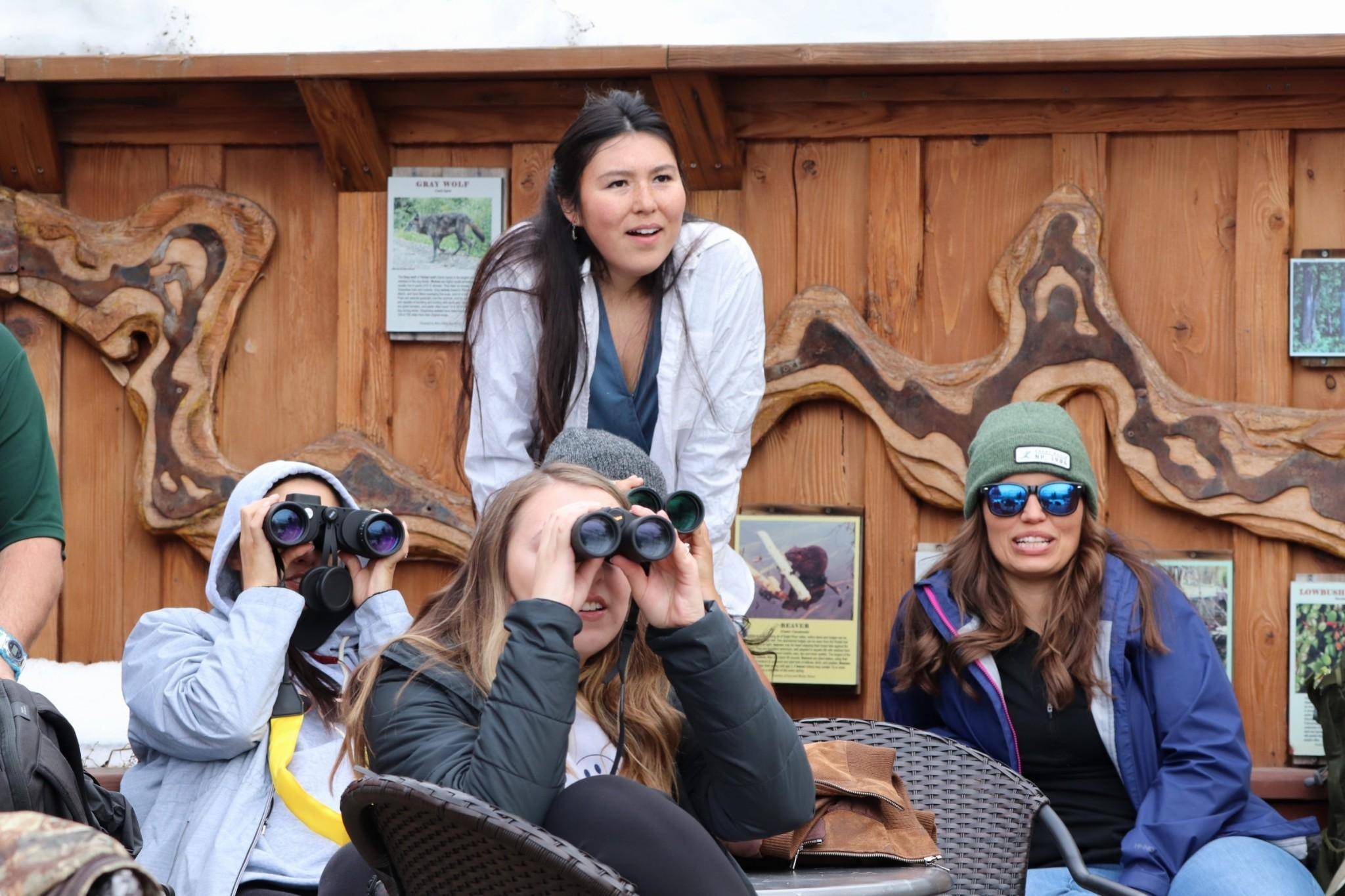
Avian Influenza Prevention & Response in Alaska
Avian influenza, or bird flu, is a highly contagious virus that affects wild and domestic birds. Alaska’s position along major migratory bird pathways increases the risk of virus transmission, making monitoring and prevention essential. In April 2022, the first cases of Highly Pathogenic Avian Influenza (HPAI) H5N1 were detected in wildlife and domestic poultry in Alaska. Since then, outbreaks have posed risks to wildlife, poultry, and subsistence harvests.
For Alaska Native communities, HPAI is especially concerning as it threatens traditional hunting and harvesting practices, food security, and cultural connections to wildlife. Understanding how the virus spreads and taking precautions can help protect Alaska’s wildlife, food resources, and communities.
Management Challenges in Alaska
Mitigating HPAI in Alaska presents unique challenges due to the state’s geography, climate, and reliance on wildlife for subsistence. Key factors include:
- Migratory Bird Pathways – Alaska is a key stopover for migratory birds from Asia and the Americas, increasing the risk of HPAI introduction and spread.
- Remote and Rural Communities – Many affected areas are isolated, making disease surveillance, response efforts, and veterinary support logistically difficult.
- Limited Veterinary and Diagnostic Resources – Access to testing facilities and veterinary care is constrained in many regions, delaying detection and response.
- Reliance on Subsistence Harvesting – Alaska Native communities rely on traditional subsistence practices, including the harvest of wild birds, making HPAI a direct threat to food security and cultural traditions.
- Harsh Weather and Seasonal Constraints – Extreme weather, frozen waterways, and limited daylight in winter complicate monitoring and biosecurity measures.
- Public Awareness and Outreach – Communicating risks and mitigation strategies across diverse communities, languages, and landscapes is a challenge.
Impacts to Alaska Native Communities
Alaska Native communities face distinct challenges from Highly Pathogenic Avian Influenza (HPAI) due to their reliance on subsistence harvesting. Outbreaks threaten food security by reducing access to wild birds and other key resources while also disrupting cultural traditions tied to hunting and food preparation. Economic strain can increase as communities turn to costly store-bought food when subsistence harvests decline.
Limited healthcare and veterinary services in remote areas make it difficult to detect and respond to infections, while HPAI’s impact on wildlife populations can alter migration patterns and disrupt traditional resource management. Additionally, effective outreach is essential but challenging, as information must be culturally relevant and accessible across diverse communities. Proactive monitoring, community-led strategies, and support for traditional food systems are key to reducing long-term impacts.
The Tribal Avian Influenza Information Hub offers resources for identifying and reporting sick or dead wildlife, establishing monitoring and reporting systems for wildlife managers, and understanding the impacts of HPAI on migratory birds and marine mammals. It also provides management strategies, risk reduction guidelines for hunting, harvesting, and poultry or livestock raising. Additional resources include a list of potential collaborating agencies, funding opportunities, and printable outreach materials.

Monitoring & Reporting Avian Influenza
Monitoring & Surveillance
Monitoring & Surveillance: Avian influenza monitoring and early detection can help stop the spread. Stay updated on AI detections in your region in wild birds, poultry, mammals, and livestock.
Wildlife managers can be trained to collect samples for laboratory testing and field safety protocols. NAFWS offers wildlife health trainings and conference events, including an HPAI training in Anchorage, AK. Check the event calendar or contact NAFWS for details.
Responding & Reporting: Tribal wildlife managers should establish a system for responding to and reporting dead or diseased animals. Encourage staff and community members to report cases with key details like location, species, and symptoms to the appropriate Tribal, state, or federal agency.
Data Security: The global impact of avian influenza, and its potential for mutation, underscores the importance of data sharing. Discuss data sharing and security with relevant reporting agencies, including USDA APHIS and the National Animal Health Laboratory Network (NAHLN).
Identifying & Reporting
Signs in Poultry & Livestock
- Weakness, low energy, or loss of appetite
- Nasal discharge, swelling, or purple discoloration
- Respiratory problems
- Strange behavior or trouble moving
- Death
Signs in Wild Birds & Mammals
- Readily approached
- Inability to fly or move
- Swimming or walking in circles
- Neurologic signs such as twisted neck or irregular head movements
- Death
Not all infected birds show symptoms, so always take precautions. Wear PPE when handling birds.
Report Sick or Dead Birds
- Tribal Wildlife Management Agency: Contact your Tribe for reporting guidelines.
- Federal Agencies:
- USFWS Alaska Sick/Dead Bird Hotline: 1-866-527-3358 or email [email protected]
- USDA-APHIS Wildlife Services: 1-866-4USDA-WS (1-866-487-3297)
- Veterinarian: Report illness or death in a backyard flock to the local or State Veterinarian Office (1-907-375-8215).
- Observations can also be reported to the Local Environmental Observer (LEO) Network.
Report Sick or Dead Mammals
- Report sick wildlife: Contact the regional Alaska Department of Fish and Game office or report online
- Report a sick or dead marine mammal: National Marine Fisheries Service (NMFS) Alaska Stranding Hotline at 1-877-925-7773
Include in your report
1. Location
2. Species & Symptoms Observed
3. Photos or Videos (if possible)
Tips to Prevent HPAI Spread
Effective sanitation and the proper use of personal protective equipment (PPE) is essential for both protecting both people and wildlife and preventing spread of HPAI.
Wash Hands
Practice regular handwashing with soap and water. If unavailable, use hand sanitizer containing at least 60% alcohol.
Separate Equipment
Use designated tools and equipment for specific areas to prevent cross-contamination. Disinfect shared equipment before and after use.
Wear PPE
Use disposable gloves, protective shoe covers or boots, protective clothing, eye protection, and N95 respirators to reduce inhalation of particles.
Designate Areas
Clearly separate “clean” areas, such as feed storage and bird handling zones, from “dirty” areas, including waste disposal or contaminated equipment zones, to minimize cross-contamination risks.
Clean & Disinfect
Clean and disinfect surfaces, equipment, and clothing before and after each use with EPA-approved disinfectants (e.g., Pine-Sol, accelerated hydrogen peroxide, or bleach diluted in a 1:32 ratio).
Safe Waste Disposal
Dispose of bedding, manure, and other waste in sealed bags or designated composting areas to minimize environmental contamination.
HPAI PREVENTION:
Steps to Clean & Disinfect
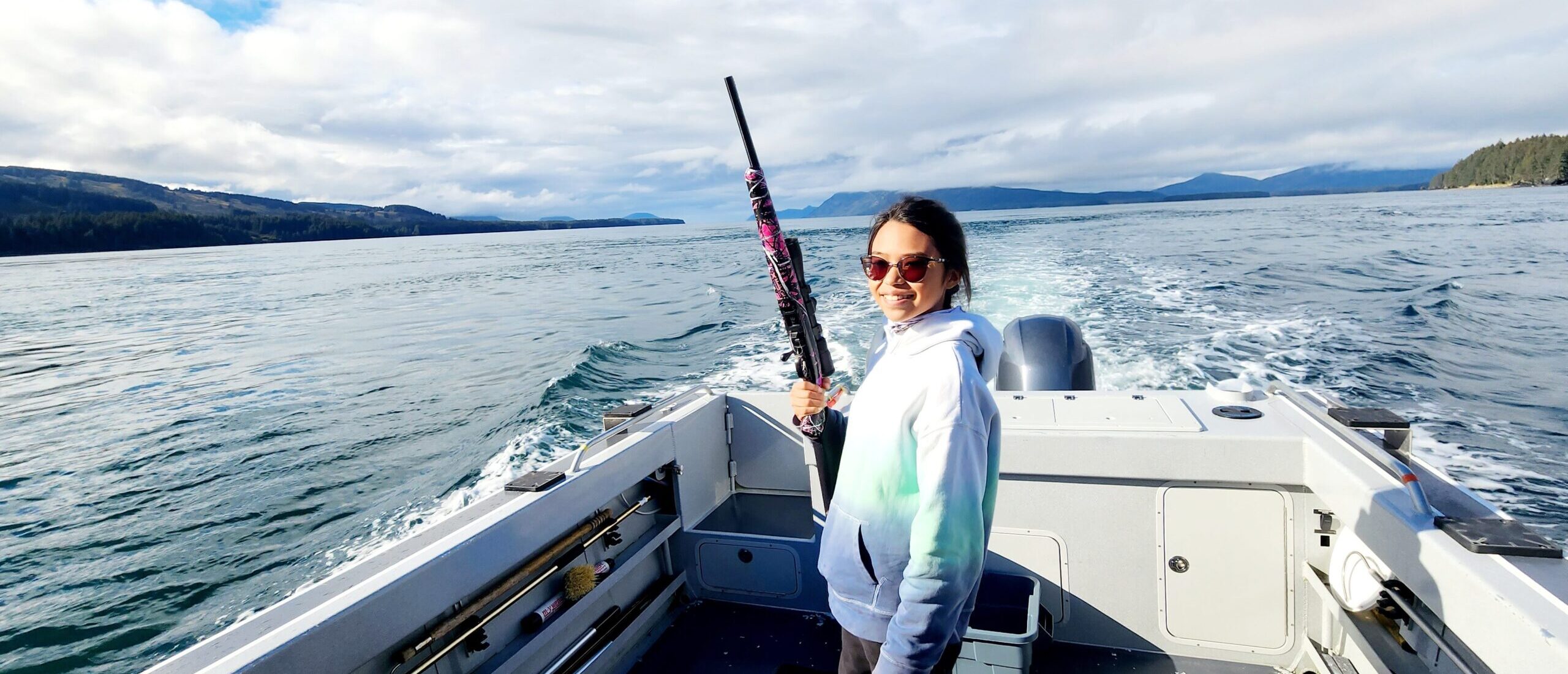
Risk Reduction while Hunting & Harvesting
Role of Hunters in Early Detection
Hunters are often the first to notice unusual bird behavior, such as sick birds or mass die-offs. Reporting these signs to Tribal wildlife agencies or public health authorities helps prevent further spread and protects both wildlife and communities.
Safe Hunting Practices
Follow these precautions to reduce your risk:
- Avoid handling sick or dead birds – Do not hunt or eat animals that appear ill.
- Use PPE – Wear gloves and other protective gear when handling game.
- Clean game in an open-air space – Process game outdoors to avoid enclosed contamination.
- Wash hands & tools – Use soap and water or alcohol wipes after handling game.
- Disinfect surfaces & equipment – Clean all knives, tables, and tools after use.
- Separate raw & cooked meat – Store uncooked game away from ready-to-eat foods.
- Cook meat thoroughly – Poultry should reach 165°F internally to kill viruses and bacteria.
- Dispose of waste safely – Properly discard carcasses and contaminated materials.
- Clean up before meeting others – Wash hands, change clothes, and disinfect gear to prevent spreading contaminants.
- See Additional Recommendations for Hunters
Safe Egg Harvesting
During HPAI outbreaks, extra precautions can help protect Tribal communities while collecting eggs from wild birds and reduce transmission of the virus between nesting sites. Precautions include:
- Avoid nests with sick or dead birds – Do not harvest eggs from nests in areas with birds that appear ill.
- Avoid damaged eggs – Do not use eggs with damaged shells.
- Use PPE – Wear gloves and other protective gear when collecting eggs. Change gloves to avoid transmitting the virus between nests.
- Disinfect eggs – Use disinfectant wipes to clean eggs immediately after harvest. Wash eggs in soapy water and sanitize them using a diluted bleach solution before consumption.
- Cook thoroughly – Eggs should reach 165°F internally to kill viruses and bacteria.
Stay updated with Alaska subsistence migratory bird harvest regulations and avian health updates.
Protecting Poultry, Pets & Livestock
Hunting and harvesting activities can introduce HPAI to domestic animals. To prevent spread, follow biosecurity measures such as cleaning clothing and gear before contact with poultry or pets. See Protecting Poultry & Livestock for more details.
Protecting Poultry & Livestock
For many Tribal communities, poultry and livestock are essential for food security and economic stability. An HPAI outbreak can cause significant losses in animals and pose health risks to people. Preventative measures and rapid response are key to protecting both livestock and the communities that rely on them.

Resources
USDA Defend the Flock Resource Center: Tools and resources for to support proper biosecurity practices for poultry raising.
USDA HPAI in Livestock: Resources for enhancing biosecurity, laboratory testing, and financial assistance.
Healthy Farm Healthy Agriculture: Provides resources for training and developing a biosecurity plan including HPAI prevention, detection, and response strategies in livestock by species.
Alaska State Veterinarian: Information on Alaska HPAI updates, animal health programs and alerts, and dairy sanitation program.
Stay Informed
Federal agencies monitor HPAI detections. Stay updated by reviewing reports of AI detections in your region, including in wild birds, poultry, mammals, and livestock. Also, keep track of human cases.
Strengthen Biosecurity
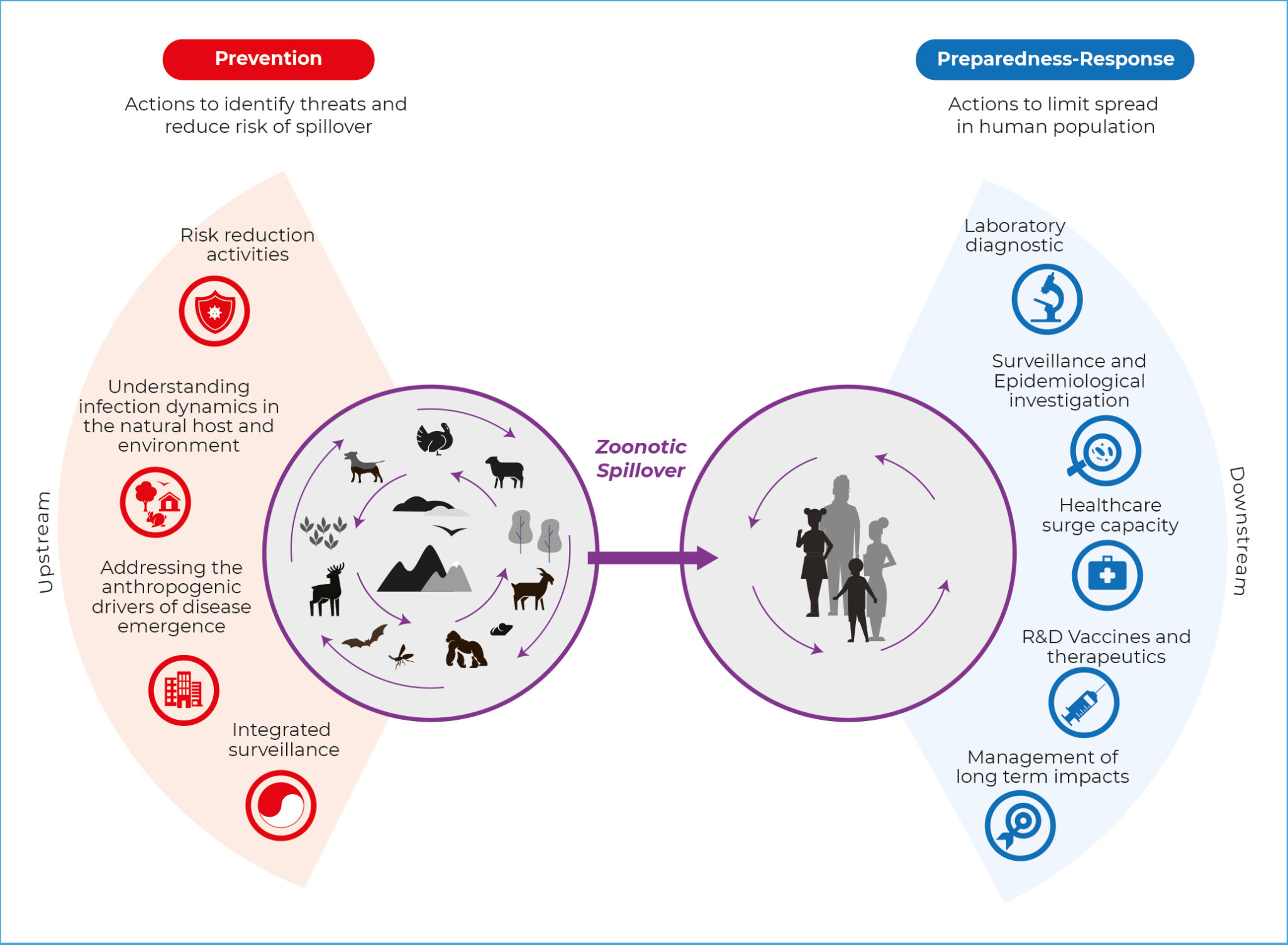
Structural Biosecurity
Limit Wildlife Contact: Prevent direct or indirect contact between wild and domestic animals to reduce disease transmission.
Secure Food & Water Sources: Inspect and protect feed storage, water sources, and animal enclosures to prevent contamination.
Implement Wildlife Deterrents: Use bird spikes, netting, sound devices, and other deterrents to keep wildlife away from high-risk areas.
Operational Biosecurity
Practice Good Hygiene: Wash hands frequently with soap and water or use hand sanitizer containing at least 60% alcohol.
Clean & Disinfect Equipment: Clean and disinfect tools, shoes, vehicles, and facilities with EPA-approved disinfectants (e.g., diluted bleach, Pine-Sol).
Maintain Biosecurity Zones: Keep clean areas (e.g., feed storage) separate from dirty areas (e.g., waste disposal) to reduce contamination risks.
Restrict Access to High-Risk Areas: Limit entry to animal enclosures, feed storage, and quarantine zones.
Properly Dispose of Contaminated Materials: Use incineration, designated composting areas, or sealed bags to safely dispose of carcasses and waste.

Alaska’s Migratory Birds & the Avian Flu
This information session explores the impact of avian influenza in Alaska, including its spread, effects, and implications for the spring harvest. Experts Dr. Tolani Francisco, a veterinarian with the Native American Fish and Wildlife Society (NAFWS) and owner of Native Healing LLC, and Charles Menadelook, Subsistence Resources Program Director at Kawerak, provided valuable insights and updates on the issue.
Protecting Seabirds, Marine Mammals, and Culture
Highly Pathogenic Avian Influenza (HPAI), a virus that originated in poultry and spread to wild birds, poses serious threats to wildlife, Alaska Native communities, and the deep cultural relationships between people and the environment. Seabirds such as puffins, auklets, and murres are especially vulnerable, with outbreaks causing mass die-offs and disrupting marine ecosystems. The global spread of the virus was facilitated by migratory birds traveling through major migratory flyways, four of which pass through Alaska, compounding existing challenges like climate change-driven food shortages. Marine mammals, including seals and sea otters, may also be at risk, as seen in 2023 die-offs in South America, where HPAI was suspected in widespread mortality events. The potential for cross-species transmission raises concerns for other culturally significant species that Alaska Native communities rely on for subsistence.

The annual Yukatat Tern Festival celebrates Aleutian Terns and Alaska Native community: At Alaska’s Yakutat Tern Festival, Seabirds and Local Culture Soar.
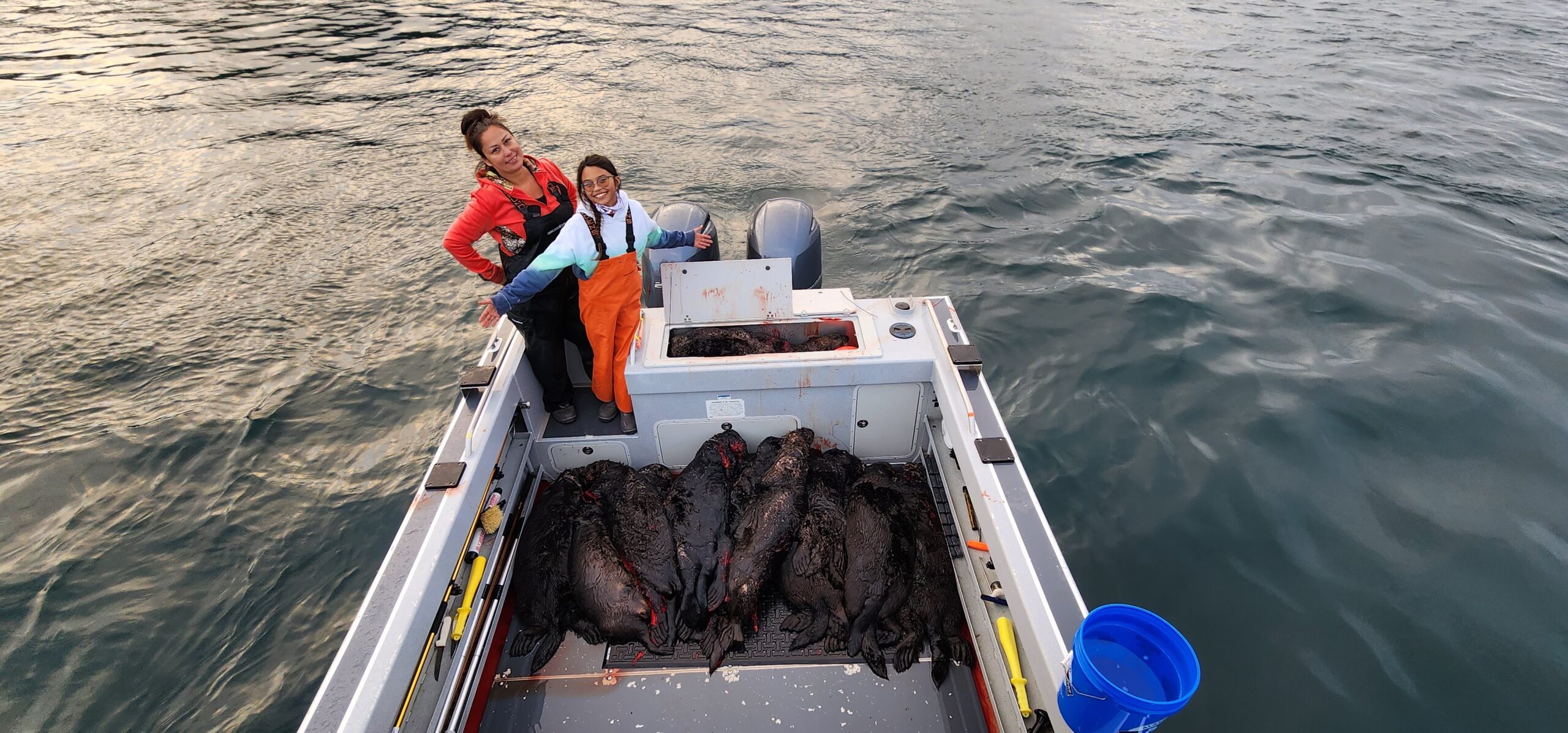
NAFWS Alaska Regional Director, Hope Roberts, connects to her community and culture through marine mammal hunting: Marine Mammal Huntress: A Native Woman on an Epic Quest.
Compounding Effects of HPAI and Climate Change
Since 2015, seabird populations in Alaska have suffered major die-offs due to starvation, linked to warming ocean temperatures and shifting prey availability. These ongoing stressors leave already weakened birds more vulnerable to HPAI, potentially accelerating population declines. As seabirds struggle to recover, the loss ripples through marine food webs, affecting fisheries and other species essential to Alaska Native subsistence.
Furthermore, the decline in seabirds impacts the broader marine ecosystem, affecting food webs that Alaska Natives rely on for fishing, hunting and harvesting other species. The cascading effects of these compounded challenges underscore the urgent need to address HPAI and bolster the resilience of wildlife populations to protect both ecological health and the cultural integrity of Alaska Native communities.
Mitigating HPAI Impacts
Seabirds & Marine Mammals
- Implement targeted monitoring and surveillance, especially during migration and breeding seasons
- Encourage public participation in reporting sick or dead birds and marine mammals.
- Establish biosecurity measures
- Encourage safe handling practices for wildlife managers, hunters, and egg collectors.
Cultural Practices
- Promote safe subsistence harvesting
- Support community lead monitoring & surveillance
- Develop regionally and culturally appropriate outreach materials
- Document and share traditional knowledge about seabird and marine mammal harvesting to sustain cultural practices for future generations
Four Major Global Migratory Flyways Cross Alaska
Learn about the significance of migratory birds in Alaska Native cultural traditions and their role in linking communities across the Pacific:
Children of the Sky: connecting cultures across the Pacific with migratory birds
Additional Resources
NAFWS Resources
NAFWS provides training and support through the Wildlife Health Initiative to help Tribes manage wildlife health and respond to disease outbreaks. Training sessions at regional and national conferences cover HPAI testing and biosecurity. Check the Event Calendar or contact NAFWS staff for details.
Alaska Native Organizations
Alaska Tribal Resilience Learning Network: Provides community education and knowledge sharing, technical assistance, training, and support for Alaska Tribes.
Alaska Migratory Bird Co-Management Council: Contact representatives from Alaska Native communities, USFWS, and ADF&G that work to conserve migratory birds through development of recommendations for the subsistence spring/summer harvest in Alaska.
Alaska Food Security and Independence Task Force: Released the Alaska Food Security and Independence Task Force 2023 Report and an accompanying website with resources for wild food, food production and processing, distribution and access, and waste management.
Alaska Native Tribal Health Consortium: ANTHC provides health services, educational, and capacity building opportunities.
ANSCA Alaska Native Corporations: Contact information for each regional corporation.
Government Partners
Many government agencies provide support for HPAI prevention and response, with some offering direct assistance to Tribal Nations.
Animal Health Contacts: List of Animal health contacts including veterinarian, laboratory, and emergency response.
USDA Animal and Plant Health Inspection Service (APHIS): Offers funding, emergency response training, and diagnostic testing through the National Animal Health Laboratory Network. Tribes can also request training and support from the Office of the National Tribal Liaison.
Center for Disease Control and Prevention (CDC): Offers information on HPAI and human health, Provides updates on human HPAI cases, public health strategies, and communications tools.
Alaska Department of Environmental Conservation: Office of the State Veterinarian provides information on HPAI resources and updates.
Additional resources may be available through the Bureau of Indian Affairs (BIA), U.S. Geological Service (USGS), Fish & Wildlife Service (FWS), Environmental Protection Agency (EPA), and Occupational Safety and Health Administration (OSHA).
Funding Opportunities
Tribes can access funding for disease prevention and response through programs such as:
- NADPRP – Supports Tribal projects on animal disease preparedness.
- NAHLN – Funds disease surveillance and prevention.
- AMR Dashboard – Supports projects on antimicrobial resistance in livestock and poultry.
- Other – Other funding may be available for disease response, biosecurity, and education.
